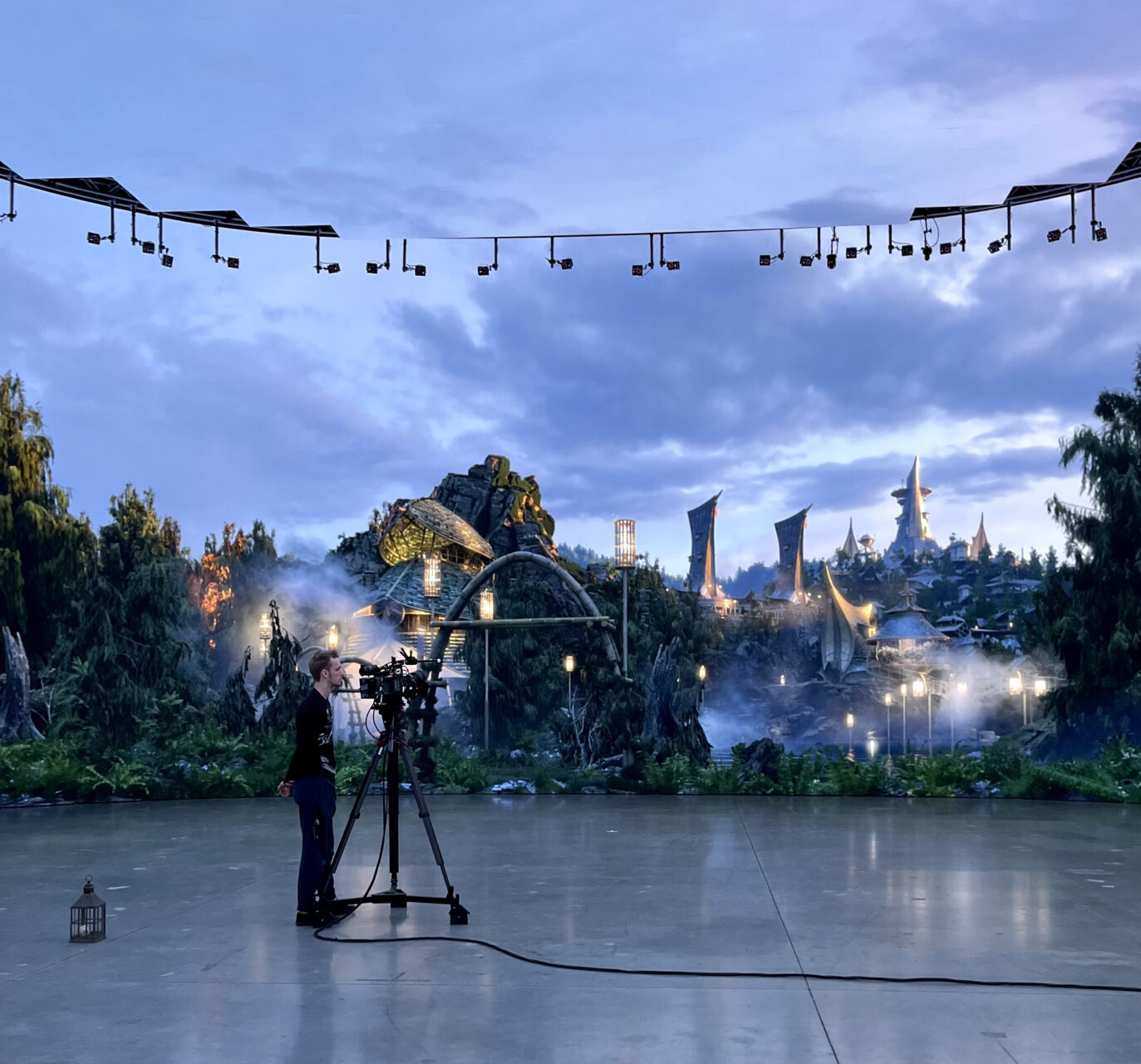When you head to Trilith Studios, located just south of Hartsfield–Jackson Atlanta International Airport, you’re immediately struck with the stark contrast to other studios. While most major studios are enveloped by the bustling cityscapes and traffic of urban centers, Trilith nestles serenely among trees and rolling hills. At first glance, you forget that, as of summer 2023, this is the largest movie studio in the U.S. We were fortunate to have the opportunity to tour the facility and talk with Frank Patterson, president and CEO of Trilith Studios.
Frank shared the studio’s vision, which officially opened in 2014. “It’s to have every resource great storytellers need to do anything they can imagine,” he says. This means that everything is purpose-built on three pillars: story, technology and facilities. The studio houses virtually everything a production company could need right on site. You can find electricians, carpentry shops, greens, craft services and service vendors within the studio’s expansive 900 acres and 24 soundstages.

Originally, Pinewood Studios from the U.K. and Dan Cathy of Chick-fil-a partnered to develop the studio. It all began when Dan allowed a studio to use one of his warehouse spaces for filming. Believing in a more effective method to film in Atlanta, he discovered the site. From there, he formed a partnership with Pinewood Studios and hired Frank. Pinewood Studios began from a humble beginning with just a few soundstages. Their first major movie was the MCU’s “Ant-Man” (2015). Since then, most of Marvel MCU movies have been shot here. In fact, three of the top 10 highest-grossing films have been shot at Trilith Studios. And it’s still growing.
What’s the story behind the name “Trilith”?
Within a few years, the studio wanted to expand beyond the facilities business, prompting a mutual parting with Pinewood. This separation led to a rebranding.
“We came upon ‘Trilith,’ which means three stones,” Frank tells me. He sees it as a reminder of the structures at Stonehenge, “Which is right up the road from Pinewood. It really served as a great metaphor for what we’re doing in this purpose-built place.” It respects its U.K. roots yet remains distinct, like its location. Frank points out that Stonehenge, like Trilith, was the technology of its day, rich with story and a unique facility.
But you can’t build a studio in the middle of the Georgia woods without having an infrastructure in place as well.
“We now have a town called ‘Town at Trilith’ with restaurants and a hotel that’s about to open and over 1,200 people living here,” Frank says. The town, like the studio, is purpose-built — not just to accommodate residents but also to stimulate creativity. “We’re really trying to be this place that focuses on story and storytellers and the lives they live, so we can enable them to do anything they can imagine.”
The community is filled with different architectural styles and artistic expressions. The plan is to have around 1,500 homes all interconnected to walking paths and “pocket parks.” The goal is for residents to have unplanned meetings that will foster community and creativity. Trilith aspires to be a haven where storytellers and their families flourish. Topping it off is the Piedmont Wellness Center, a state-of-the-art facility dedicated to promoting health and fitness. Anyone involved in a studio project has access to the wellness center — a unique idea in the industry.

The highest tech
One of the reasons that Marvel and other IPs are flocking to Trilith is its commitment to technology. As Frank mentions, it’s one of the pillars of Trilith’s mission, “I basically just love the technology behind our industry — trying to figure things out and problem solve.” One of the newest tools at the studio, found in Soundstage 22, is a virtual production volume named the Prysm Stage. We got a demonstration of this incredible space on our tour.
Frank says this is a collaboration he’s been working on for some time. “One of my favorite thinkers in the industry has a guy named Cliff Plumer, who was the first CTO, Chief Technology Officer, for ILM, then the CEO for digital domain.” Seeing the need for a virtual set, Frank reached out to Cliff. “I thought we should work on this together, and he brought on Barbara Ford Grant, who is a technology rockstar. Then we hired Barry Williams, who leads our technology here at Trilith. He was on the original Mandalorian team.”
Barry was there to guide them through the demo.
“We came around this building within a building that’s constructed of seamless LED monitors. We passed by several workstations that run processors. The processors control the virtual environment that can, in a moment, be a temple in the jungles of Indonesia, a city street with cars whizzing by or floating in the clouds,” Frank explains. “A camera is outfitted with a positioning sensor, nicknamed “the Sputnik” to track what the camera sees. Barry told us that some of their best work has yet to be seen and will be featured in Francis Ford Coppola’s upcoming blockbuster ‘Megalopolis.’ The Prysm stage is the first, but it won’t be the last built at Trilith.”
For the future of storytelling

Of course, telling today’s stories with today’s tools is the present reality at Trilith, but they’re also keenly focused on supporting future storytellers and artists. This means they nurture and educate the people who will be the next generation of filmmakers. Between the front gate of the studios and the town hub sits the Georgia Film Academy. The school offers summer camp experiences for younger learners and apprenticeship programs for anyone wanting to enter the industry. “The team created the certificate programs, where we fast train everyone below the line — grips, electric, painters, carpenters, makeup people. In their last two months, they actually apprentice with union members on the set and get them right into the workforce.” Frank says.

The education also extends to all Georgia schools. “Our newest Trilith entity is called the Trilith Institute, which is an organization that we formed to be kind of an aggregator of all of these education initiatives around the state to make certain that students K through 12 can plug into this education pipeline.” This story arts curriculum aims to teach many disciplines in a story framework. Ultimately the plan is to create a new generation of visual storytellers. “Look, we’re not dummies. This is a pipeline for our talent for the future,” Frank says with a chuckle.
Paving the way for new VFX technologies
Trilith is a booming place for the movie industry and is an award-winning community designed to care for and grow artists. “Today, we may only be 900 acres. We’re going to blink an eye, and it’s going to be 6,000 acres. If we are good stewards of the resources we’ve been blessed to have at our disposal and we stay on course to build this place where great storytellers can do anything they can imagine. Twenty-five years from now, this will be 6,000 amazing acres of great traditions for storytelling.”
Keep your eyes on Trilith. It’s shaping the template for developing new technologies and processes. Filmmakers ready to dive into the next big production can reach out to Trilith Studios. If you’re in the Atlanta area and wish to tour the facility, known as the “Trilith Experience,” consider connecting with the Trilith Foundation.
Featured image courtesy: Grace Chaves








